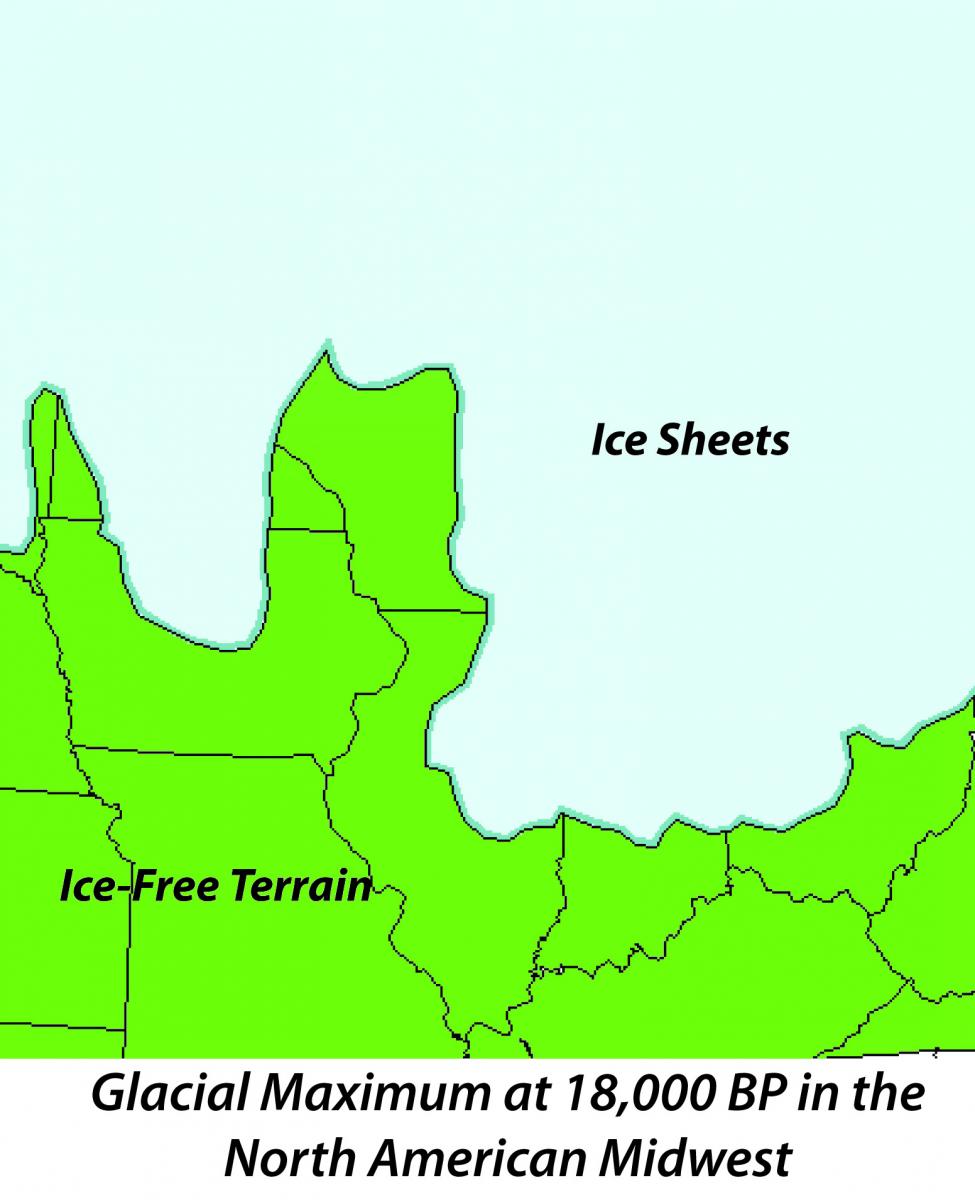What is an Ice Age?
 Broadly speaking, an ice age is an interval of time during which large areas of the Earth's surface are covered with ice sheets (large continental glaciers). The term is used to describe time intervals on two very different scales. At the larger scale, an ice age is a long, generally cool interval in the Earth's history during which glaciers advanced and receded. These periods typically lasted tens to hundreds of millions of years and were characterized by the presence of extensive ice sheets at the northern and southern latitudes (i.e., near the poles). They are separated by much warmer, and typically much longer, intervals of time during which the Earth was generally ice-free - these are known as thermal maximums.
Broadly speaking, an ice age is an interval of time during which large areas of the Earth's surface are covered with ice sheets (large continental glaciers). The term is used to describe time intervals on two very different scales. At the larger scale, an ice age is a long, generally cool interval in the Earth's history during which glaciers advanced and receded. These periods typically lasted tens to hundreds of millions of years and were characterized by the presence of extensive ice sheets at the northern and southern latitudes (i.e., near the poles). They are separated by much warmer, and typically much longer, intervals of time during which the Earth was generally ice-free - these are known as thermal maximums.
 Within a geologic ice age, global and regional climates fluctuate between much cooler and somewhat warmer periods that were marked by the advancement and retreat of glaciers. The cooler periods are known as glacials or periods of glaciation, and they are the intervals during which the glaciers were at or near their maximum extent. These periods typically lasted tens of thousands of years, and they were separated by warmer interglacial periods, during which the glaciers retreated. Currently, we are in a warm interglacial period, and the last period of glaciation, which peaked around 18,000 years ago, is typically referred to as the last "Ice Age". When used in this way, the first letters of both words are often capitalized.
Within a geologic ice age, global and regional climates fluctuate between much cooler and somewhat warmer periods that were marked by the advancement and retreat of glaciers. The cooler periods are known as glacials or periods of glaciation, and they are the intervals during which the glaciers were at or near their maximum extent. These periods typically lasted tens of thousands of years, and they were separated by warmer interglacial periods, during which the glaciers retreated. Currently, we are in a warm interglacial period, and the last period of glaciation, which peaked around 18,000 years ago, is typically referred to as the last "Ice Age". When used in this way, the first letters of both words are often capitalized.

